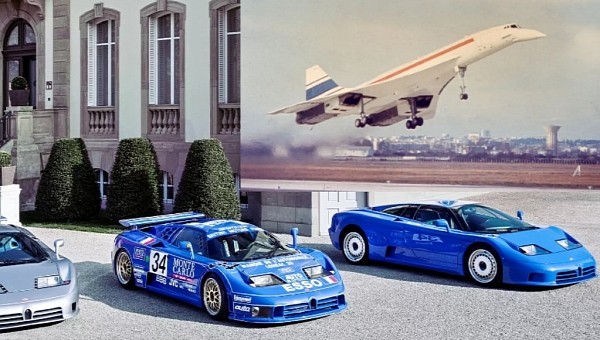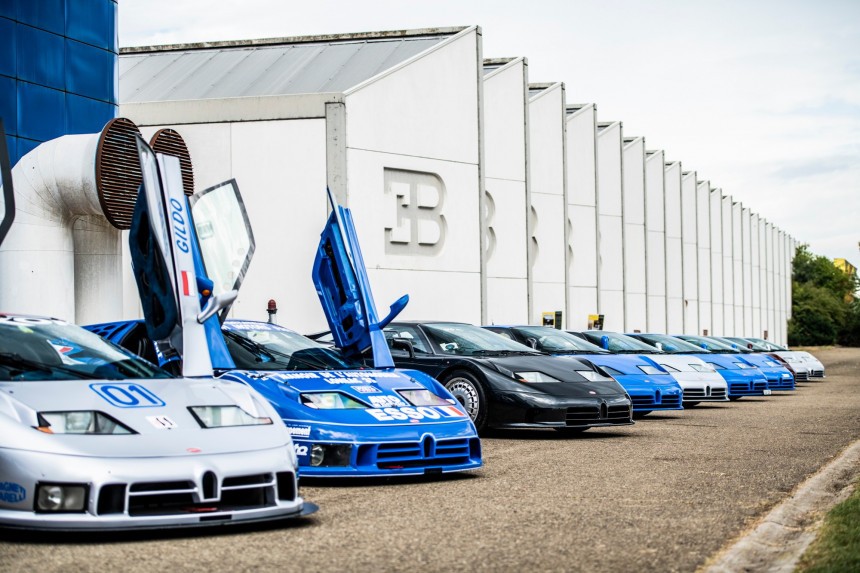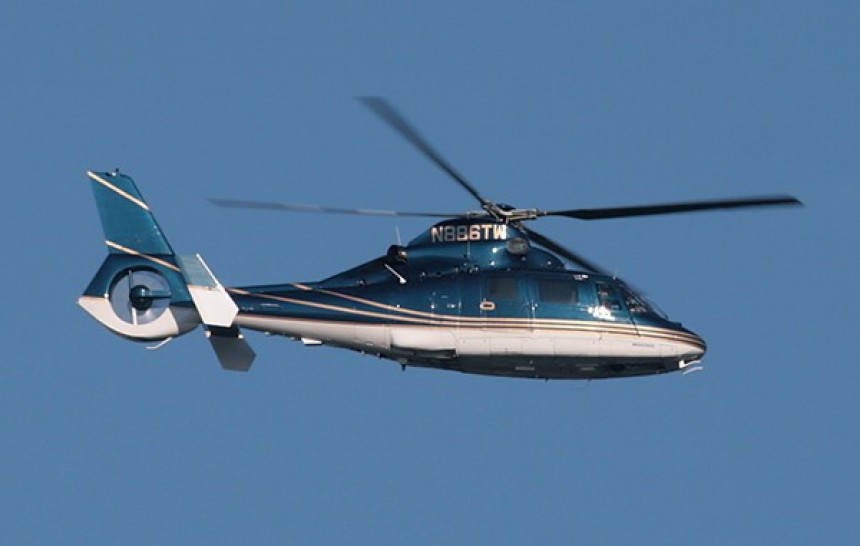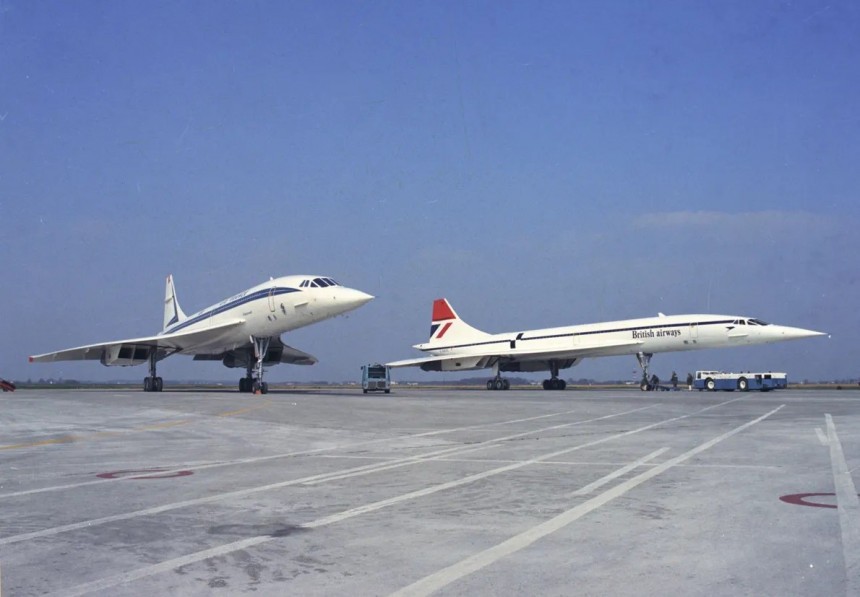It's the first day of Celebration Month here on autoevolution. A month in which every year, we just choose to write about whatever topic we please. For this month's Air & Space portion, we'd like to start by telling the story of a compelling partnership between two European manufacturers: one on the streets and one in the air.
We all know the story of the Bugatti EB 110, and how its parent company's worn more than a couple of different national hats in its day. But in the days before Bugatti's acquisition by the German Volkswagen Group, the company was owned in the late 80s and early 1990s by an Italian entrepreneur by the name of Romano Artioli.
A man who longed to take a long-dead French luxury/racing automaker and turn the lunacy to a level fit for an Italian with a few glasses of prosecco in their gullet. But you might not know that the beloved EB110 wouldn't have been possible if not for the help of, of all people, a French aerospace company. One-half of the team that gave the world the Concorde supersonic airliner.
In fairness, the Aérospatiale group built much more than just many components of Concorde. In their 30s years of operation, their expertise in building fixed-wing jet trainers, UAV target drones, missiles, helicopters, and even sub-sonic conventional airliners lent well to the ambitions of the newly re-formed, Italian-owned Bugatti group.
What Bugatti needed desperately for their EB 110 project was a chassis with a strong and dependable foundation. A chassis that could handle high levels of acceleration, braking, g-forces, temperature tolerances, the whole shebang. Aérospatiale themselves were familiar with cutting-edge research in state-of-the-art manufacturing materials.
At a time when the thermodynamics of flight at Mach two-plus were still being novelly studied, it was Aérospatiale engineers with the help of British Aerospace Corporation (BAC), who developed some of the highest-grade aluminum alloys ever applied to a civilian passenger jet. This made for an airframe that could withstand the unrelenting friction of very high supersonic flight. Though questions about metal fatigue plagued Concorde in its twilight years, the results of Aérospatiale's research were, at least at first, nothing short of marvelous.
Aérospatiale also had experience with high-quality carbon fiber composites. A material Bugatti very much wanted to use, and one that Aérospatiale made use of in abundance thanks to the rotor blades of the SA 365 Dauphin 2 medium-sized utility helicopter. Until just this year, the Dauphin 2 was still manufactured under license by Aérospatiale's successor company Eurocopter.
With over 1,100 Dauphin II airframes manufactured and sold across all corners of the globe over almost 50 years of continuous production, that sure must lend to lots of experience in handling carbon fiber. It turned out to be a match made in heaven. Though the Bugatti EB110 went through more than one exterior redesign before the final production standards were reached, the biggest evolution arguably came deep beneath EB 110's skin.
When the EB110's initial aluminum honeycomb chassis proved insufficient, Bugatti's technical director Nicola Materazzi formally reached out to Aerospatiale to help fashion a new chassis with more modern composite materials. Though the company was no doubt swamped with obligated work servicing its helicopters and Concorde supersonic airliners, Aerospatiale agreed to provide a small team of engineers to help elevate Bugatti's flagship hypercar to the next level.
The end product was nothing short of astonishing. With a greatly improved stiffness and structural rigidity over the previous aluminum chassis, the performance and handling characteristics of this quad-turbocharged V12 monster machine improved dramatically, as did its reliability in multi-thousand-mile stress tests the car once failed miserably at.
This killer powertrain and strong, lightweight chassis made for a wombo-combo, unlike anything that'd been seen on a legal road passenger car. It was even the supercar of choice for Formula One icon Michael Schumacher. It figures a man who spent his life pulling Gs like a fighter pilot was fond of a car with a sprinkling of DNA from the aerospace sector. The EB 110 turned out to be a landmark car for Bugatti, albeit not big enough to keep the brand alive.
As for Aerospatiale? Well, they'd officially go defunct an uncanny 15 days before the tragic loss of the Concorde Air France Flight 4590 that more or less doomed the plane to museum status permanently. By this point, Bugatti Automobili had already been bought out by the Volkswagen Group, setting the company on course to finally break the glass ceiling with the Veyron and then the Chiron.
There's an argument to be made that none of it would've been possible without a liberal dose of help from the auto industry's sibling sector of aerospace. The aerospace and automotive spaces don't often intertwine in such an overt fashion anymore. But when they do, it's always worth talking about.
Thanks for joining us on the first day of Celebration Month here on autoevolution.
A man who longed to take a long-dead French luxury/racing automaker and turn the lunacy to a level fit for an Italian with a few glasses of prosecco in their gullet. But you might not know that the beloved EB110 wouldn't have been possible if not for the help of, of all people, a French aerospace company. One-half of the team that gave the world the Concorde supersonic airliner.
In fairness, the Aérospatiale group built much more than just many components of Concorde. In their 30s years of operation, their expertise in building fixed-wing jet trainers, UAV target drones, missiles, helicopters, and even sub-sonic conventional airliners lent well to the ambitions of the newly re-formed, Italian-owned Bugatti group.
What Bugatti needed desperately for their EB 110 project was a chassis with a strong and dependable foundation. A chassis that could handle high levels of acceleration, braking, g-forces, temperature tolerances, the whole shebang. Aérospatiale themselves were familiar with cutting-edge research in state-of-the-art manufacturing materials.
Aérospatiale also had experience with high-quality carbon fiber composites. A material Bugatti very much wanted to use, and one that Aérospatiale made use of in abundance thanks to the rotor blades of the SA 365 Dauphin 2 medium-sized utility helicopter. Until just this year, the Dauphin 2 was still manufactured under license by Aérospatiale's successor company Eurocopter.
With over 1,100 Dauphin II airframes manufactured and sold across all corners of the globe over almost 50 years of continuous production, that sure must lend to lots of experience in handling carbon fiber. It turned out to be a match made in heaven. Though the Bugatti EB110 went through more than one exterior redesign before the final production standards were reached, the biggest evolution arguably came deep beneath EB 110's skin.
When the EB110's initial aluminum honeycomb chassis proved insufficient, Bugatti's technical director Nicola Materazzi formally reached out to Aerospatiale to help fashion a new chassis with more modern composite materials. Though the company was no doubt swamped with obligated work servicing its helicopters and Concorde supersonic airliners, Aerospatiale agreed to provide a small team of engineers to help elevate Bugatti's flagship hypercar to the next level.
This killer powertrain and strong, lightweight chassis made for a wombo-combo, unlike anything that'd been seen on a legal road passenger car. It was even the supercar of choice for Formula One icon Michael Schumacher. It figures a man who spent his life pulling Gs like a fighter pilot was fond of a car with a sprinkling of DNA from the aerospace sector. The EB 110 turned out to be a landmark car for Bugatti, albeit not big enough to keep the brand alive.
As for Aerospatiale? Well, they'd officially go defunct an uncanny 15 days before the tragic loss of the Concorde Air France Flight 4590 that more or less doomed the plane to museum status permanently. By this point, Bugatti Automobili had already been bought out by the Volkswagen Group, setting the company on course to finally break the glass ceiling with the Veyron and then the Chiron.
There's an argument to be made that none of it would've been possible without a liberal dose of help from the auto industry's sibling sector of aerospace. The aerospace and automotive spaces don't often intertwine in such an overt fashion anymore. But when they do, it's always worth talking about.

















